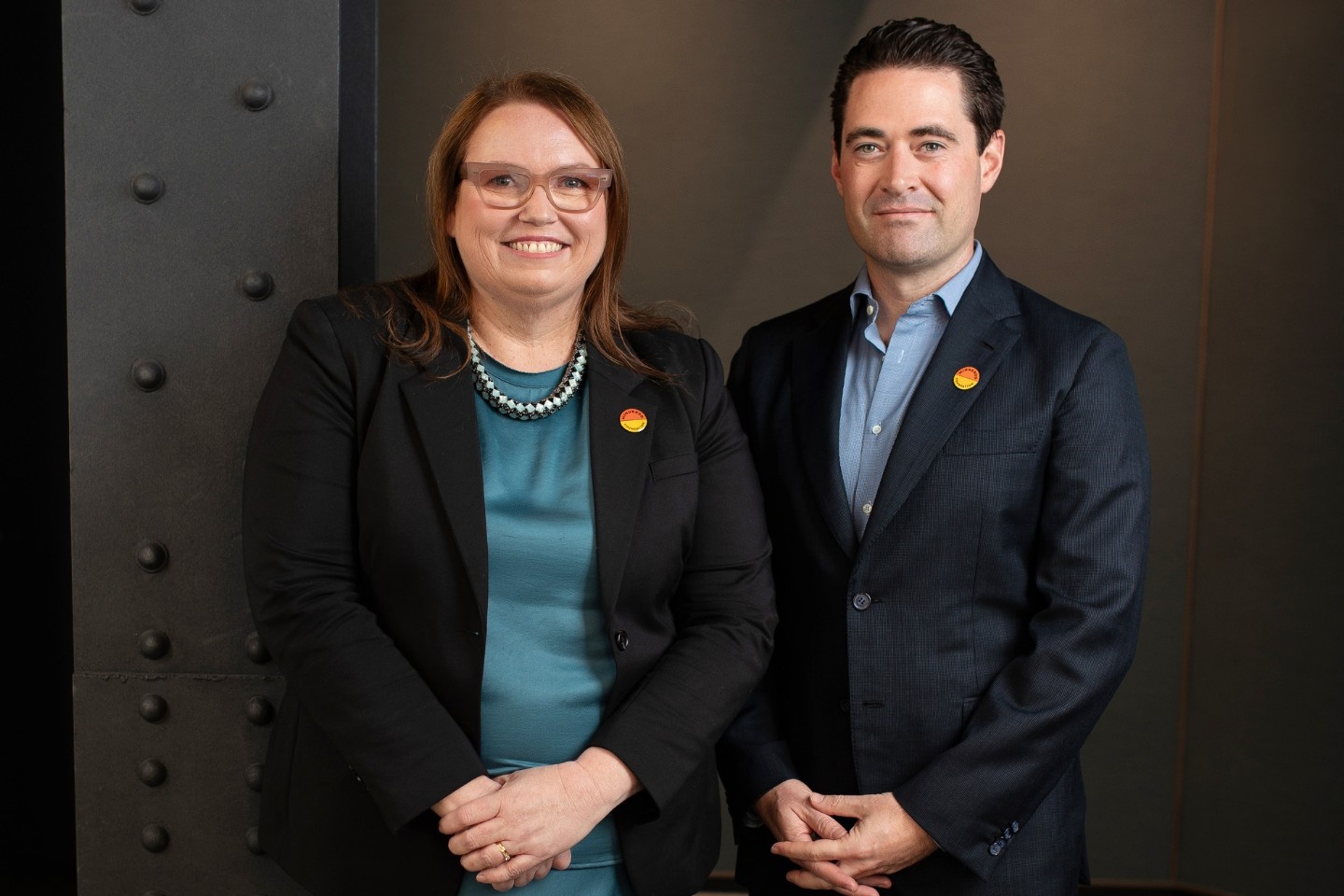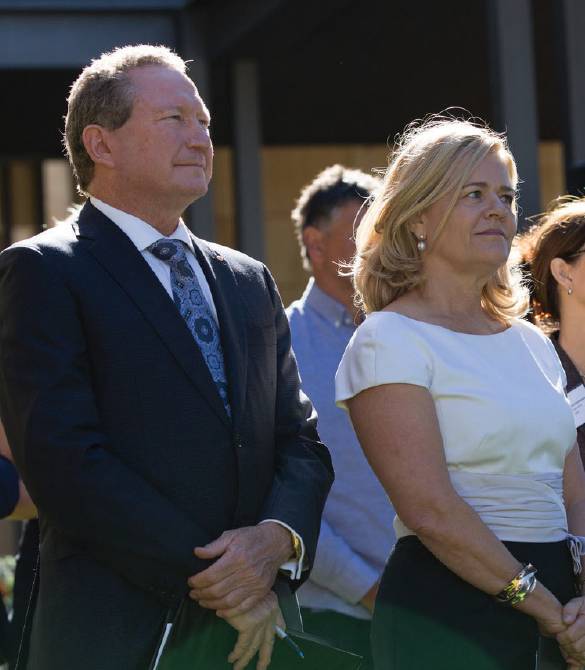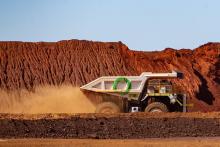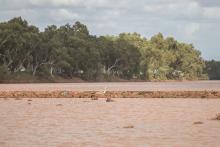Minderoo Foundation is redefining the future of philanthropy with a reshaped strategy of funding and support.


In a world of compounding social and environmental challenges, short-term fixes are no longer enough.
That’s the message from one of Australia’s most influential philanthropic voices, Minderoo Foundation, which is shifting the tide on how philanthropy is practised.
Founded in 2001 by Andrew and Nicola Forrest in Perth, Minderoo has become a global philanthropic powerhouse with an asset base of $8.2 billion.
Its ‘impact expenditure’ totalled $210 million in the year to June 30, 2024.
Within this total, it distributed $137 million in funds.
That made it WA’s largest philanthropic foundation, ahead of the Stan Perron Charitable Foundation and the Channel 7 Telethon Trust, according to Business News’ Data & Insights.
Minderoo’s reach goes far beyond WA.
The foundation has committed more than $20 million in humanitarian aid to Ukraine and, since 2023, has delivered $43 million to conflict-affected areas in the Middle East.
Closer to home, Minderoo backed a $14 million investment in Edith Cowan University’s WA Academy of Performing Arts – making up the largest ever philanthropic contribution to Australia’s performing arts sector.
It committed $100 million to Future Generation Women, a philanthropic investment fund advancing economic equality and opportunity for Australian women and children, and $4 million to St Patrick’s Community Support Centre for homelessness support towards a new health centre and social housing.
Minderoo also formed a three-year, $3 million partnership with Ngangk Yira Institute for Change at Murdoch University, strengthening culturally safe healthcare for First Nations children and families in WA.
Future focus
In March 2025, Kristen Stevenson was appointed executive director of effective philanthropy at Minderoo, after serving in senior roles across the organisation since 2019.
She leads the rollout of Minderoo’s 2030 strategy.
“We’re in a really incredible position now, because we have taken the time over the past couple of years to develop a really robust strategy,” Ms Stevenson told Business News.
The strategy follows an evaluation of Minderoo’s previous 11 initiatives and now focuses on three core pillars: communities, gender equality and natural ecosystems – while strengthening the foundation’s ability to respond to crises.
“We took a step back, and we evaluated where we are best positioned to have the greatest impact,” Ms Stevenson said.
The strategy incorporates an area called “impact missions” that enables responses to emerging issues and existential threats.
The strategy reflects a collaborative, partner-led approach and longer-term thinking that goes beyond 12-month planning.

Andrew and Nicola Forrest have become a philanthropic powerhouse, locally and internationally. Photo: Attila Csaszar
“We co-design with our partners on the outcomes we’re trying to achieve and work together to try to tackle these problems,” Ms Stevenson said.
“We’re now in multi-year funding arrangements, which provide a lot more certainty for the organisations we’re funding.
“They’re able to plan and execute better by knowing they’ve got long-term commitments from us.”
Mindset shift
Minderoo chief executive John Hartman, the Forrest family’s most senior executive across its private business and philanthropic ventures, believes philanthropy needs to reimagine its role in society by moving away from short-termism.
“If we’re serious about building a better Australia, we need to re-imagine how we think about impact,” he said.
“That means shifting away from putting band-aids on gaping societal wounds and investing in a deeper examination of root causes.
“But the scale and difficulty of today’s challenges mean we all have a role to play.”
He said the for-purpose sector had historically stepped in where markets and governments fell short, but it often ended up treating symptoms rather than causes.
“Too often, we play it safe – backing short-term, easily measured initiatives while ignoring the systems that shape people’s lives,” Mr Hartman said.
“But the biggest challenges need long-term thinking and long-term funding.
“Innovation requires risk, and broad change takes time.”
Lasting change
In addition to long-term, multi-year partnerships and ecosystem-building, Minderoo is adopting a funding model called Pay What It Takes.
The PWIT initiative, co-chaired by Lisa Allan of The Smith Family and Denise Cheng of Equity Trustees, is designed to cover both direct program costs and indirect costs like staffing and systems.
A 2022 report by the Centre for Social Impact and Social Ventures Australia found that indirect costs in the not-for-profit sector hovered around 33 per cent – far higher than the 10 to 20 per cent many funders have traditionally allocated.
The initiative encourages funders to adopt practices that recognise and support the true costs of delivering social impact, aiming to strengthen the capacity and sustainability of the not-for-profit sector.
“At Minderoo Foundation, we believe that achieving meaningful and lasting change requires strong, well-resourced partners,” Mr Hartman said.
“That’s why we have adopted a Pay What It Takes approach to funding.”
From July, Minderoo grants will cover the full cost of delivering change, including essential infrastructure like staff, systems and evaluation.
“Right now, too many of our not for profits and social enterprises are stuck in a cycle of scarcity – held together by passionate people but underfunded, underpowered and expected to do more with less,” he said.
“We’re adopting Pay What It Takes because thriving organisations, not exhausted ones, drive real impact.”
A 2024 report by the Australian Charities and Not-for-profits Commission on the sector showed that while total revenue reached a record high of just more than $200 billion in 2022, expenses rose by $22 billion in the same period.
As a board member of Philanthropy Australia, which supports the initiative alongside SVA and the CSI, Ms Stevenson said the shift was long overdue.
“The reality is [not for profits] were in this vicious cycle of not being able to employ good talent, not being able to develop their people, not having the systems to be able to do the work,” she said.
Future giving
With an estimated $5 trillion in inter-generational wealth expected to change hands in Australia over the next two decades, Mr Hartman said this moment presented a once-in-a-generation opportunity.
“Structured giving is an important part of this transition because it creates long-term, sustainable support,” he said.
Minderoo is investing in wealth networks and professional advisers to help Australians give with confidence and impact.
“Educating the people that support those individuals is almost equally as important as letting the next generation understand what they could do with their wealth,” Ms Stevenson said.
“The issues we’re trying to solve are multi-generational, and so you have to take a long-term approach to them.
“It’s going to take a lot of effort, a lot of research, a lot of investment to actually make the changes that we need to,” she said.
Combining the efforts of organisations around Australia and the world is something Ms Stevenson feels is vital in solving these multifaceted problems.
“It’s a reality that philanthropy can’t do things alone. Government can’t do things alone,” she said.
“No one organisation has enough resources to be able to solve any of these problems.
“Finding a shared issue and us all working on it together, we probably have more likelihood of success.”
Ms Stevenson pointed to the essential role of business in this shift.
“Business has an obligation to be involved to make sure that people are healthy and happy and can contribute to society.”
Global view
While Minderoo maintains a strong Australia-first focus, it recognises that some challenges, like climate change and gender equality, require global collaboration.
The foundation has made a $US100 million ($153 million) unrestricted investment in the Co-Impact Gender Fund, which supports women-led, community-based organisations across the Global South (developing and least developed countries).
It’s also backing cutting-edge environmental innovation, including the use of environmental DNA (eDNA) technology to protect marine ecosystems and support citizen science projects.
In April, Minderoo Pictures contributed £1.5 million ($3.1 million) to Ocean with David Attenborough, a new environmental documentary film backed by Dr Forrest, who holds a PhD in marine ecology.
The film, a £4.5 million production, is designed as a wake-up call on climate action.
“We collaborate with partners who understand local contexts to solve global problems – and bring the best ideas back to Australia,” Mr Hartman said, reinforcing a central pillar of Minderoo’s approach.
“The for-purpose sector can be the engine of a fairer, more resilient, more ambitious Australia.
“But only if we choose to invest in it and back our partners.”
Minderoo works with more than 300 partners nationally and internationally.
“We don’t need to build from scratch,” Mr Hartman said.
“Australia already has a network of peak bodies and place-based organisations. Let’s modernise and partner with them.
“Let’s break siloed efforts and start scaling what works.”















